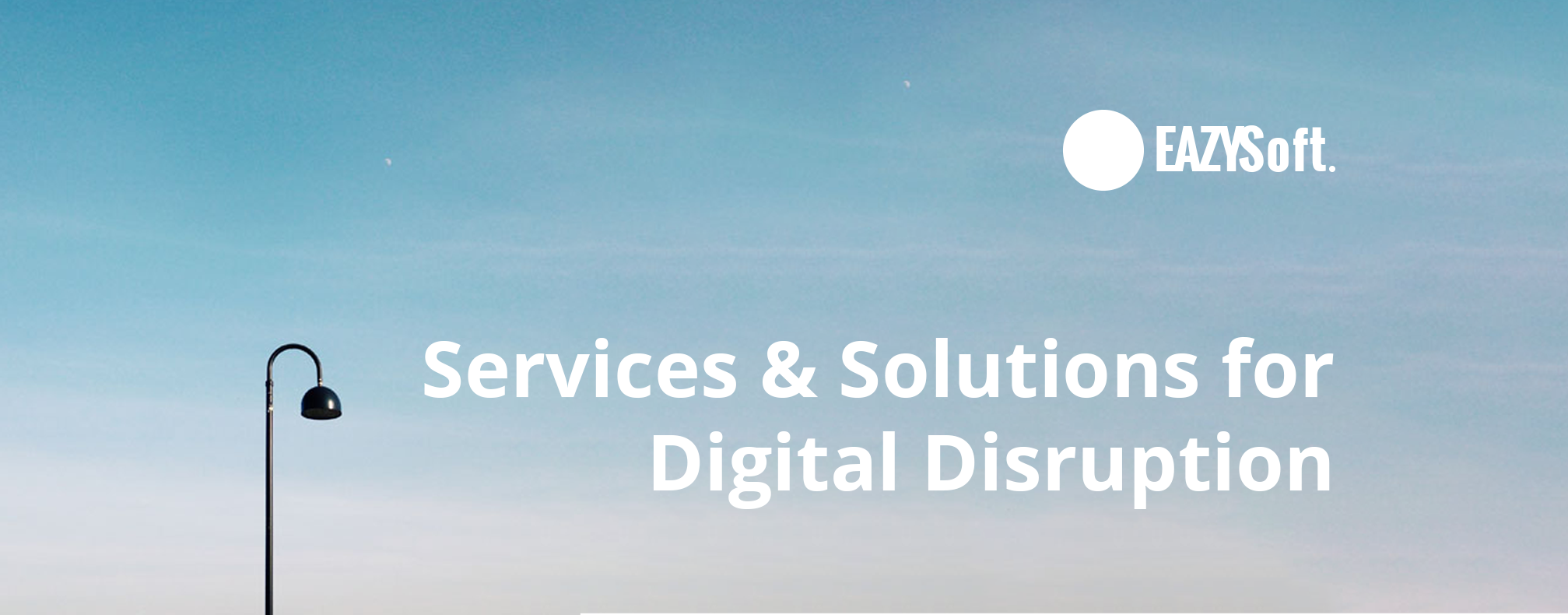
Services & Solutions for Digital Disruption
In today’s world, by the time a technology has gained a foothold, it’s already fallen out of favour and is being replaced by something new. And now, as every company has to be a technology company and no company is too big to fail, keeping pace in the world of digital transformation requires radical technological changes. Businesses that don’t embrace this change or gather the talent to help implement it, run a serious risk of being disrupted by those that do. But disruption doesn’t have to spell doom for every enterprise.
Digital disruption is a transformation that is caused by emerging digital technologies and business models. These innovative new technologies and models can impact the value of existing products and services offered in the industry. This is why the term ‘disruption’ is used, as the emergence of these new digital products/services/businesses disrupts the current market and causes the need for re-evaluation.
How Does Digital Disruption Impact Businesses?
Digital disruption is an unstoppable force and to try and fight it is futile. But what businesses can do is embrace digital disruption, even plan for it. Keeping an eye on the ball and knowing the signs of digital disruption emerging in your industry means you can get ahead of the game and work with the flow rather than against it. Not only does this prevent the wave of digital disruption from washing away your success, it can also lead to further growth and new opportunities for the business.
Digital disruption typically marks changes in consumer needs and therefore working with the tide allows you to fulfil these emerging needs, keeping existing customers happy and opening up opportunities for new customers to find what they need from your brand.
5 Solutions for Digital Disruption
Intelligent Agents
AI solutions that can interact with their users, learn their behavior and understand their needs, and even make decisions on their behalf. Today’s prototypes include Amazon’s Alexa, Microsoft’s Cortana, Google Now and Google Home, and Apple’s Siri. The landscape for this emerging technology is expanding rapidly to include a wide range of chatbots, virtual agents, robotic process automation, and other digital assistants. Personalized, high-quality experiences promise to increase customer loyalty and reduce customer attrition. As minders of internal processes, Intelligent Agents also promise to reduce costs, improve productivity and optimize all types of business activities.
Augmented and Virtual Reality
Augmented reality (AR) overlays digital information and experiences on the physical world while virtual reality (VR) creates a new interactive digital environment. AR has the potential to radically change the customer experience (especially in retail) and the way employees perform their work (e.g., assisting in machinery maintenance). VR will have a more limited impact, but can play a disruptive role in consumer applications.
IoT Software and Solutions
The Internet of Things (IoT) provides companies with on-going insights into what’s going on with their products, operations, and customers. “The ability to map the physical world into a digital model will define business within 10 years,” says Forrester, and “for many companies dealing with physical assets, IoT will simply become a way of doing business.” Forrester puts “IoT Analytics” in a separate category with somewhat lesser disruptive potential but I would argue that the entire potential of IoT to make a profound business impact lies in analytics and deriving insights from “connected devices [that] spew out a colossal amount of and diversity of IoT-specific, time series data.
AI and Cognitive Technology
Using advanced machine learning to discover insights in data, suggests actions, and continuously learn by mimicking natural human cognitive functions. This set of emerging technologies (e.g., natural language processing) has the potential to create unique, highly differentiated customer value and radically improve internal processes.
Hybrid Wireless Technologies
Interfaces and software that allow devices to simultaneously leverage and translate between two or more different wireless providers, protocols, and frequency bands, such as light, radio, Wi-Fi, cellular, and Sigfox. Connecting everything to everything with a new communications infrastructure, coupled with advanced analytics and contextual customer and consumer engagement solutions, will drive new applications capable of understanding, anticipating, and meeting customer demands in new ways.
Finally, It is more important than ever for companies to get serious about digital innovation and transformation. In order to compete with both the “web scale” giants and nimble start-ups, enterprises must invest in technological innovation, technical talent and data (both collection and analysis) to stay sharp and ahead of the pack in the tumultuous times ahead.
